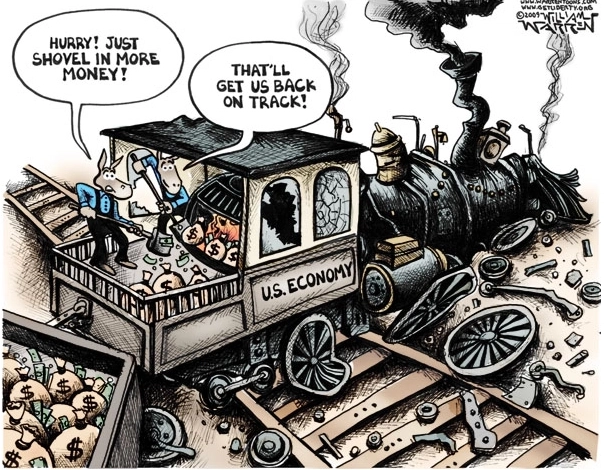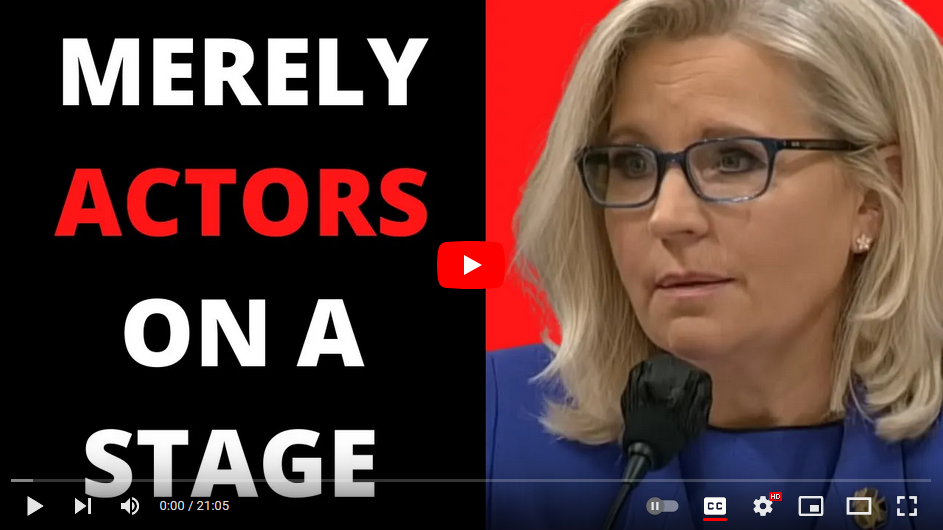June 13, 2022
Permission to republish original opeds and cartoons granted.
Recession predictor 10-year, 2-year treasuries spread inverts once again amid crushing inflation
By Robert Romano
The spread between 10-year and 2-year treasuries, a reliable indicator of incoming recessions that has predicted almost every recession in modern economic history, inverted once again overnight on June 13 amid financial markets turmoil with interest rates rising rapidly, the dollar strengthening and equities markets crashing.
That is almost certainly terrible news for President Joe Biden and Congressional Democrats ahead of the 2022 Congressional midterms. The White House has attempted to highlight relatively low unemployment numbers as signs of a healthy economy, with President Biden on June 3 declaring the latest jobs numbers as “good news.”
Markets are delivering a different verdict, with the economy’s warning lights flashing red a little more than a week later.
The same 10-year, 2-year treasuries spread inverted on March 31 following the onset of war in Ukraine and the worsening global supply crisis that has led to crushing consumer inflation — now 8.6 percent the last 12 months according to the Bureau of Labor Statistics, the highest since 1981 — that continues to drive gasoline and food prices ever higher. Pressure on everything from agriculture, oil and natural gas supplies all over the world has led to a surge in commodities prices across the board.
Usually after an inversion, a recession tends to come about 14 months on average following the inversion, sometimes more, sometimes less.
The bad news comes a day ahead of a meeting of the Federal Reserve Board of Governors, where the central bank is expected to once again hike interest rates for the third time this year in a belated attempt to tame inflation that has been north of 5 percent since June 2021. Markets report expectations of at least a half a percentage point rate hike by the Fed, to 1.25 percent to 1.5 percent, although that would still put the Federal Funds Rate still well below the inflation rate.
That is because the Fed had kept rates at near-zero percent when the Covid global economic lockdown triggered a brief but sharp recession in 2020 when 25 million jobs were lost, and then the central bank did not quickly set rates higher even as more than 16 million were recovered before the year ended. Even as it was clear the recovery was well underway, and even when inflation raced past 5 percent a year ago, the central bank kept rates artificially low while trillions of dollars were still being pumped into the economy.
It is something the Biden administration very well should have considered in Jan. 2021 when it came into power with razor-thin Congressional majorities. Instead, Biden responded with his $1.9 trillion stimulus and $550 billion of new spending for infrastructure.
All told, Congress had spent and borrowed more than $6 trillion to combat Covid, including during the Biden term, resulting in the M2 money supply has increased by $6.3 trillion to $21.7 trillion today, a 41 percent increase, since Jan. 2020. The Federal Reserve contributed by purchasing $3.4 trillion of U.S. treasuries since Jan. 2020, so-called quantitative easing, increasing its share to a current level of $5.7 trillion.
It is literally too much money chasing too few goods. And so nobody in hindsight should be surprised, by the ensuing inflation and the resulting overheating of the economy that now threatens a recession, least of all Biden who has been in public office since 1973 and so knows a thing or two about inflation.
And now, he’s going to learn a thing or two about what happens to incumbent political parties who have to walk into the political buzzsaw of an imminent recession in an election year, the fear of which might even be worse than the thing itself. Stay tuned.
Robert Romano is the Vice President of Public Policy at Americans for Limited Government Foundation.
To view online: https://dailytorch.com/2022/06/recession-predictor-10-year-2-year-treasuries-spread-inverts-once-again-amid-crushing-inflation/
Video: The Jan. 6 hearings are a show trial
To view online: https://www.youtube.com/watch?v=qvor9F9hx_w


Alan Reynolds: Escalating oil prices and Fed funds rates preceded every recession since 1957
By Alan Reynolds
In 1997, Former Federal Reserve Chairman Ben Bernanke, while still an academic, wrote a famous historical study for the Brookings Institution: “Systematic Monetary Policy and the Effects of Oil Price Shocks” with Mark Gertler and Mark Watson.
It began by documenting that “essentially all the U.S. recessions of the past thirty years have been preceded by both oil price increases and a tightening of monetary policy.” So here we are again tightening monetary policy at a time of unaffordable oil price increases.
In fact, Fed Chairman Jerome Powell argues the Fed must be more aggressive about raising the federal funds rate higher and faster precisely because Russia’s war on Ukraine has inflated global prices of oil, natural gas, grains and more.
At a March talk to the National Association of Business Economists Chairman Powell lamented, “The added near‐term upward pressure from the invasion of Ukraine on inflation from energy, food, and other commodities comes at a time of already too high inflation. In normal times … monetary policy would look through a brief burst of inflation associated with commodity price shocks. However, the risk is rising that an extended period of high inflation could push longer‐term expectations uncomfortably higher.”
That is a relatively hazy anxiety, since expectations change when the facts change. The University of Michigan survey of inflation expected over the next 12 month moves up down with monthly changes in reported actual inflation over the past 12 months (the infamous year‐to‐year change). That survey of expected inflation even moves up and down with contemporary changes in the price of gasoline.
What we know we almost perfect certainty is that every time in U.S. postwar history that monetary policy has added the burden of rising interest expense to the burden of added energy expense (most recently in 2004–2008), the result has always been recession.
But some will say that recession (always promised to be mild) is the price we must pay to get inflation down, which it does briefly while the recession is underway. But recessions always result in the Fed reversing course and slashing the fed funds rates – from 17.6% to 9% from April to July 1980 under Volcker, and from 5 ¼ % to zero in 2007-08 under Bernanke.
The difference between 9 hard landings and 4 soft landings in Fed interest rate cycles is that the Fed always starts cutting interest rates before recessions start in soft landings, and always starts too late in hard landings.
To view online: https://www.cato.org/blog/escalating-oil-prices-fed-funds-rates-preceded-every-recession-1957-2


